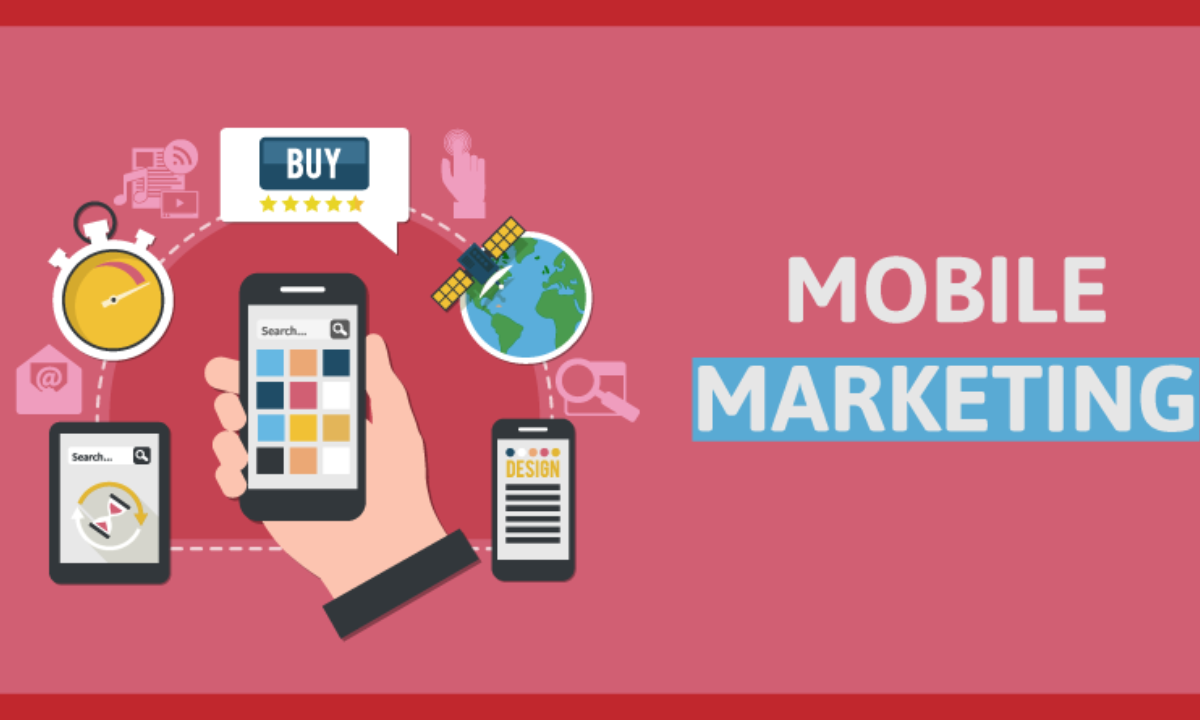Mastering Mobile Marketing Essential Definitions, Examples, and Best Practices
Mobile marketing is a rapidly growing field, driven by the increasing use of smartphones and tablets. To help you navigate this dynamic landscape, here’s a comprehensive guide on mobile marketing, its benefits, popular types, and best practices.
What Is Mobile Marketing?
It refers to strategies and tactics designed to engage users on their mobile devices, such as smartphones and tablets. The primary objectives are to reach new users and enhance the experience for existing customers through mobile interactions.
A prime example is Domino’s Pizza (UK), which uses its mobile app not only for orders but also for promotions and real-time updates on order status. This approach has resulted in almost eight million active app users in the UK, with mobile marketing contributing to 75.2% of its online sales.
Mobile Marketing vs. Digital Marketing: What’s the Difference?
While digital marketing encompasses all online marketing strategies—such as SEO, content marketing, and email marketing—mobile marketing focuses exclusively on mobile devices. This includes tactics like app notifications and SMS, which cater specifically to users seeking instant content gratification.
How Mobile Marketing Can Help Your Business
Investing in mobile marketing is crucial as smartphone usage continues to rise. Key advantages include:
- Global Reach: Engage users anytime, anywhere. With over two-thirds of people globally using smartphones, mobile marketing allows for continuous, global engagement.
- In-Depth Engagement: Interactive content like apps and AR can keep users engaged longer. MediaFly found interactive content generates 52.6% more engagement than static content.
- Personalization: Tailor messages based on user data. McKinsey reports 71% of consumers expect personalized interactions from brands.
- Channel Variety: Utilize a mix of apps, messages, games, and ads to maximize engagement. Omnisend found that using three or more channels results in a 494% higher order rate.
Popular Types of Mobile Marketing
- Mobile SEO: Optimizes your website for mobile to improve visibility in search engines. This includes responsive design, faster load speeds, and mobile-friendly content.
- Mobile Social Media Marketing: Engages users on platforms like Instagram, TikTok, and Snapchat with ads, live streams, and AR filters.
- Mobile Advertising: Delivers targeted ads based on user behavior and demographics. For instance, Adidas targets users on YouTube based on their search history.
- Location-Based Marketing: Uses proximity-based notifications and geofenced ads to reach users based on their location.
- Branded App Marketing: Offers a customized app experience with features like deals and tracking. Costco’s app is a notable example.
- Push Notifications and SMS Marketing: Sends timely alerts and personalized messages to users. Audible uses push notifications to promote new content based on user preferences.
- QR Code Marketing: Integrates QR codes into offline materials to drive users to mobile-optimized sites or promotions. Pringles uses QR codes to link to special campaigns.
Best Practices: 9 Tips to Get Started
- Optimize Your Mobile Site’s Loading Speed: Ensure quick load times to avoid user abandonment. Use tools like Google’s PageSpeed Insights to identify and fix issues.
- Personalize Your Mobile Messaging: Tailor messages based on user location, preferences, and behavior to boost engagement. Tools like One2Target can help with audience insights.
- Leverage Messaging Apps: Use apps like WhatsApp and Facebook Messenger for direct communication and interactive features. WhatsApp Business, for example, allows for broadcast messages and pre-sale support.
- Provide Frictionless Mobile Experiences: Make it easy for users to navigate and complete tasks on mobile. Optimize checkout processes and ensure touch-friendly design.
- Experiment with Immersive Technologies: Incorporate AR, VR, and interactive content to create memorable experiences. Burger King’s “Burn That Ad” campaign is a notable example of AR in action.
- Unify the Customer Journey: Ensure a consistent experience across mobile and non-mobile touchpoints. Allow users to transition seamlessly between devices, like adding items to a cart on a desktop and checking out on mobile.
- Utilize Mobile Analytics: Track and analyze mobile user behavior to refine your strategies. Use analytics tools to understand how users interact with your content and ads.
- Test and Iterate: Regularly test different marketing tactics and iterate based on performance data. A/B testing can help you find the most effective strategies.
- Stay Updated on Trends: It is constantly evolving. Keep up with the latest trends and technologies to stay competitive.
By implementing these strategies and best practices, you can effectively engage your audience and enhance your mobile marketing efforts.


